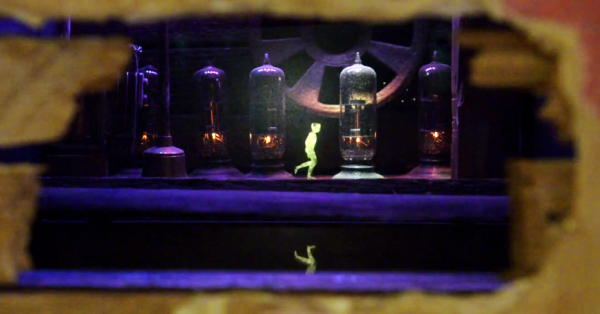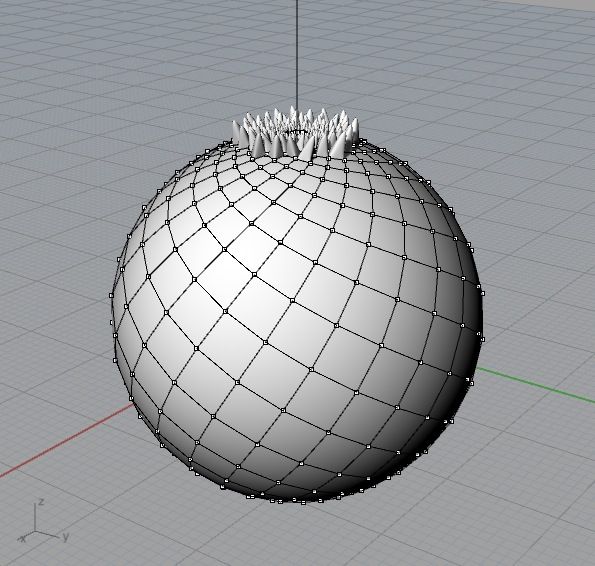Miniature golf is one of those pastimes that can be molded and redefined pretty much indefinitely. Like pinball machines which also come in an endless variety of flavors, each hole of a miniature golf course is a vignette with a theme designed to tie cleverly into its objective. Mini golf has come a long way from windmills and draw-bridges, and with technology thrown in the mix you end up with works of art like [Dan Rosenfeld’s] project, “Sleepwalkers” which go so far as to paint a holographic world for the player to interact with.
“Sleepwalkers” was commissioned by Urban Putt, a chain that accommodates for dense city spaces by building their courses indoors. Designed specially for its location, the hologram acts as a narrative told by tiny characters living within the walls of the historic building the golf course occupies. At a certain point during the game, a player is prompted to purposely place their ball into an opening in one of the old walls where it quickly rolls somewhere out of sight. When the player peeks through a series of holes dotted throughout the surface in order to find where it went, they discover another world sandwiched between wood beams and insulation. This becomes the setting of a short exchange with a character who the player must interact with in order to get their ball out of hock. The spectral glow and dimensionality of the wall’s inhabitants is created using a projection along with the Pepper’s Ghost illusion, a classic trick with angles and mirrors. Once the player’s hand enters into the Sleepwalker’s world through larger holes in the wall, a camera used for depth cues maps the projection to its presence. The tiny figure then uses the hand in a series of dioramas as a tool to climb on in order to reach the area where the player’s ball is trapped. After a joint effort, a linear actuator and sensor help to complete the illusion that the projected character is pushing the golf ball free into the real world where the player can then retrieve it and continue on to the next hole.
The traditional antics created by swinging pendulums and spinning windmills will always charm us, but the use of technology to take us into a new world will leave us with something more. You can see it on the faces of those interacting with [Rosenfeld’s] installation for the first time:
Continue reading “Interactive Projections Take Miniature Golfers To A Tiny World”





 [John] modeled several 3D sculptures in Rhino containing similar geometric properties to those found in pinecones and palm tree fronds. As the segments grow from those objects in nature, they do so in approximately 137.5 degree intervals. This spacing produces a particular spiral appearance which [John] was aiming to recreate. To do so, he used a Python script which calculated a web of quads stretched over the surface of a sphere. From each of the divisions, stalk-like protrusions extend from the top center outward. Once these figures were 3D printed, they were mounted one at a time to the center of a spinning base and set to rotate at 550 RPM. A camera then films the shape as it’s in motion at a 1/2000 sec frame rate which captures stills of the object in just the right set of positions to produce the illusion that the tendrils are blooming from the top and pouring down the sides. The same effect could also be achieved with a strobe light instead of a camera.
[John] modeled several 3D sculptures in Rhino containing similar geometric properties to those found in pinecones and palm tree fronds. As the segments grow from those objects in nature, they do so in approximately 137.5 degree intervals. This spacing produces a particular spiral appearance which [John] was aiming to recreate. To do so, he used a Python script which calculated a web of quads stretched over the surface of a sphere. From each of the divisions, stalk-like protrusions extend from the top center outward. Once these figures were 3D printed, they were mounted one at a time to the center of a spinning base and set to rotate at 550 RPM. A camera then films the shape as it’s in motion at a 1/2000 sec frame rate which captures stills of the object in just the right set of positions to produce the illusion that the tendrils are blooming from the top and pouring down the sides. The same effect could also be achieved with a strobe light instead of a camera.











